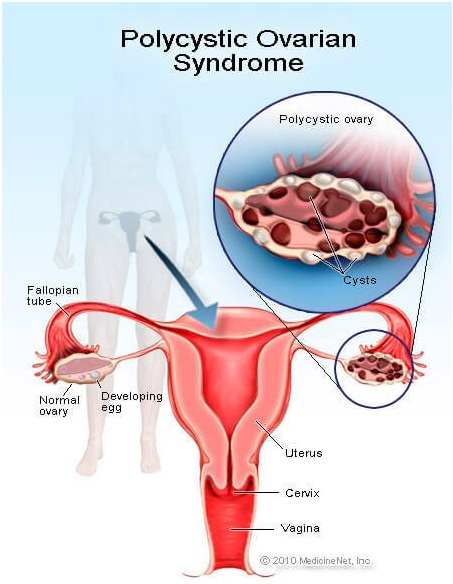Polycystic Ovarian Disease (PCOD)
What is Polycystic Ovarian Disease (PCOD, PCOS)?
Polycystic Ovary Syndrome (PCOS) is a common reproductive endocrine disorder, affecting about 5% of women.
In Polycystic Ovary Syndrome (PCOS), excessive amounts of androgens ("male" hormones such as testosterone) are produced by the ovaries. Polycystic Ovary Syndrome (PCOS) is a common cause of infertility, menstrual irregularity, and hirsute (excessive hair growth).
Definition of Polycystic Ovary Syndrome (PCOS)
Until very recently, the most widely accepted definition of Polycystic Ovary Syndrome (PCOS) was based upon the diagnostic criteria recommended in 1990 which classified Polycystic Ovary Syndrome (PCOS) as a disorder characterized by chronic hyperandrogenism (elevation of serum testosterone or other androgens) and chronic anovulation (absence of ovulation) in the absence of other specific causes of these problems.
More recently, an international consensus in 2003 expanded the definition of Polycystic Ovary Syndrome (PCOS) to include women who demonstrate two of the following three characteristics:
• Chronic anovulation
• Chronic hyperandrogenism
• Polycystic-appearing ovaries (PCO) on ultrasound
Without these criteria, a woman should not have a diagnosis of Polycystic Ovarian Disease (PCOD). Although, she may have irregular cycles, and "act" clinically like Polycystic Ovarian Disease (PCOD), her diagnosis is hypothalamic-pituitary dysfunction (HPD).
PCOS vs HPD
This distinction is important to make because Polycystic Ovarian Disease (PCOD) and HPD, although clinically similar in presentation and some long-term consequences, behave differently in response to fertility medication, egg and embryo quality, the risk of overstimulation, and OHSS.

